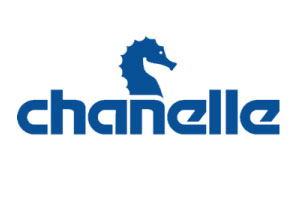Category: Worming

Royal Mail Tracked 24 (Signed For)

Royal Mail Special Delivery Guaranteed by 1pm

| Category | POM-VPS |
| Temperature | Ambient |
| MA/VM/EU No: | 11990/4034 |
| Species |
|
| VMD Link | https://www.vmd.defra.gov.uk/ProductInformationDatabase/product/A005697 |
| NOAH Link | https://www.noahcompendium.co.uk/?id=-449382&fromsearch=true#iosfirsthighlight |
| Dosage | For oral administration only using properly calibrated dosing equipment. Estimate bodyweight accurately. Shake container before use. Recommended dose rate 12 mg triclabendazole per kg bodyweight as a single administration. DOSAGE GUIDE: Bodyweight Dosage Bodyweight Dosage Up to 50 kg 6 ml 250 kg 30 ml 100 kg 12 ml 300 kg 36 ml 150 kg 18 ml 350 kg 42 ml 200 kg 24 ml 400 kg 48 ml For animals over 400 kg - give an additional 6 ml for each additional 50 kg bodyweight. Dosing Programme Routine treatment (Areas of heavy fluke infection) As a guide, dose all cattle exposed to fluke infected pastures preventatively at regular intervals of 10 weeks from March/April through to October/November. In situations where stock are out-wintered another dose in January may be required. All animals grazing the pasture should be treated at these times. All bought in animals should be dosed before joining the main flock. Veterinary advice should be sought with regard to specific preventative dosing regimes. Routine treatment (Areas of moderate fluke infection) Dose all cattle on fluke infected pastures at intervals of 10 weeks throughout the fluke season, usually September to January/February. An additional preventative treatment in Spring will assist in reducing the amount of new infection on the pastures in the following Autumn. All bought in animals should be dosed before joining the main herd. In-wintered Cattle Where cattle are in-wintered, a single dose of Tribex 10% should be given 2 weeks after housing. Treatment of sub-acute and acute outbreaks Affected cattle should be treated immediately after diagnosis and veterinary advice should be sought for subsequent dosing intervals. If a preventative fluke dosing programme is employed the occurrence of acute fluke is greatly reduced. Retreatment may not be carried out within 8 weeks. |
| Withdrawals | Do not use in cases of known hypersensitivity to the active ingredient. Special warnings Care should be taken to avoid the following practices, because they increase the risk of development of resistance and could ultimately result in ineffective therapy: • Too frequent and repeated use of anthelmintics from the same class, over an extended period of time. • Under dosing, which may be due to under estimation of body weight, misadministration of the product or lack of calibration of the dosing device (if any). Suspected clinical cases of resistance to anthelmintics should be further investigated using appropriate tests (e.g. Faecal Egg Count Reduction Test). Where the results of the test(s) strongly suggest resistance to a particular anthelmintic, an anthelmintic belonging to another pharmacological class and having a different mode of action should be used. Resistance to triclabendazole has been reported in Fasciola hepatica in cattle. Therefore, the use of this product should be based on local epidemiological information about susceptibility of the Fasciola hepatica and recommendations on how to limit further selection for resistance to anthelmintics.Do not use in cases of known hypersensitivity to the active ingredient. Special precautions for use in animals Only use for liver fluke strains susceptible to triclabendazole. Frequent and repeated use may lead to the development of resistance. Care must be taken not to damage the mouth or pharyngeal region when dosing. Clean drenching equipment before and after use. Use unaltered product from the original container. Special precautions to be taken by the person administering the veterinary medicinal product to animals When using the product do not eat, drink or smoke, Wear gloves. Wash splashes from eyes and skin immediately. Take off any contaminated clothing immediately. Wash hands and exposed skin before meals and after work. In cases of hypersensitivity and contact allergy, direct skin contact and inhalation should be avoided. Other Precautions The use of Tribex 10% may have harmful effects on fish and aquatic invertebrates. Cattle must not have any access to surface water such as streams, ponds or ditches within 7 days after treatment with Tribex. When spreading manure from treated animals on arable lands a safety distance of 10 m to adjacent surface waters must be kept. Adverse reactions (frequency and seriousness) None known Use during pregnancy, lactation or lay The product can be safely given to pregnant cattle Interaction with other medicinal products and other forms of interaction None known. Overdose (symptoms, emergency procedures, antidotes), if necessary No adverse effects were reported following a 3-fold overdose in cattle. A single dose of 200 mg/kg causes inappetence, transient weight loss and slight effects on motor activity and serum glucose lactate dehydrogenase (GLDH) in calves. Withdrawal Period(s) Meat and offal: 56 days. Milk: The product is not permitted for use during lactation in animals producing milk for human consumption. When used in non-lactating cattle: Milk for human consumption may only be taken from 84 hours after calving. Not intended for use within 41 days of calving. If calving occurs before 41 days after treatment, milk for human consumption may only be taken after 41 days plus 84 hours after the treatment. |